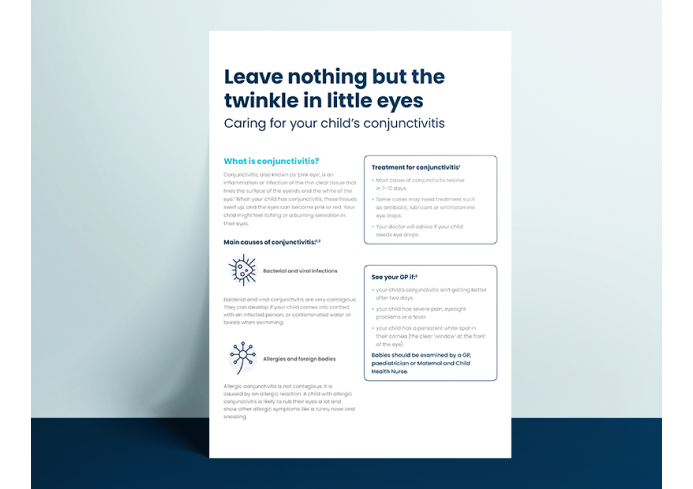06.03.2024
6 minute read
Eye care for children with conjunctivitis: A guide to educating parents
Conjunctivitis, also known as ‘pink eye’, is an inflammation or infection of the conjunctiva.1 When a child has conjunctivitis, these tissues swell up, the eyes may become pink or red, and they may experience an itching or burning sensation.
There are three main causes of conjunctivitis: bacterial infections (the most common cause in children), viral infections, and non-infectious causes, such as allergies and foreign bodies.1 Bacterial conjunctivitis is often accompanied by purulent discharge (pus); viral conjunctivitis may present with a watery discharge; allergic conjunctivitis typically presents bilaterally with itching and watery discharge, and is usually seasonal.1
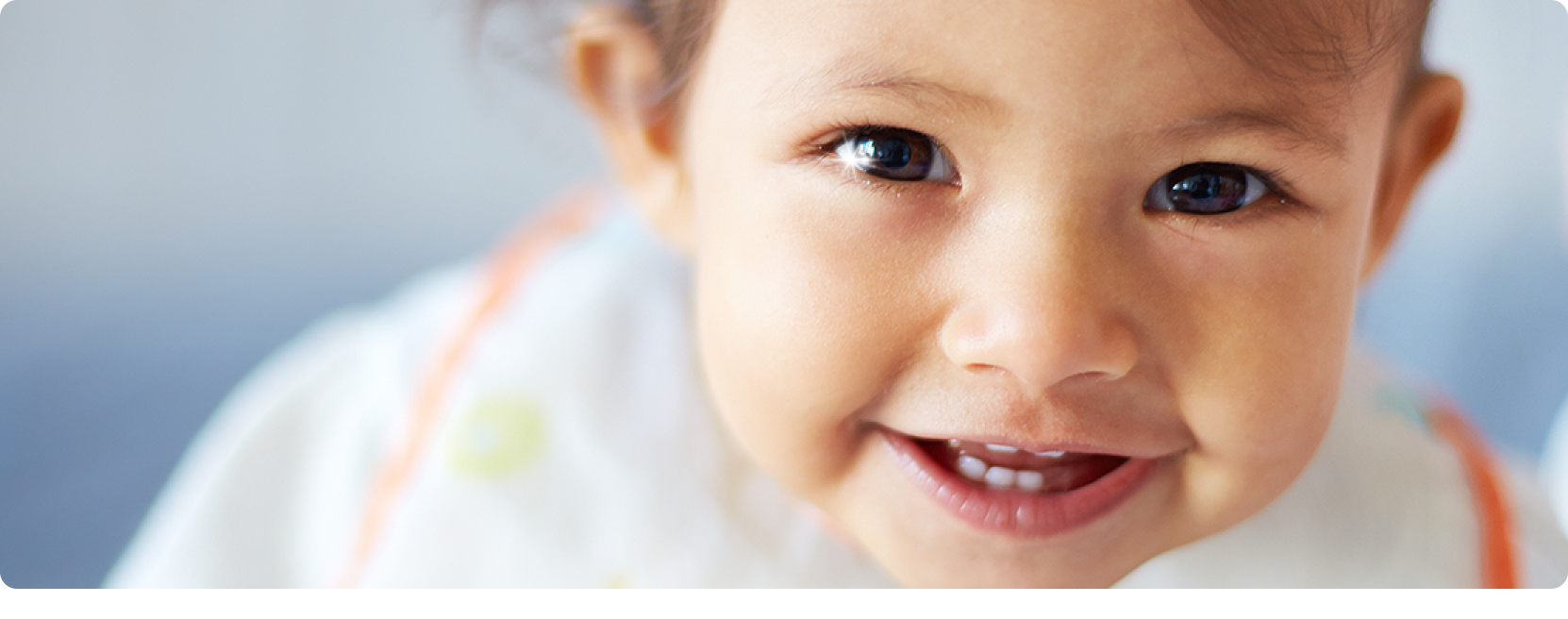
Preventing the spread of conjunctivitis
Bacterial and viral conjunctivitis are very contagious, so it’s important to educate parents and children about how they can protect themselves and others. Here are some tips:

Parents and children should wash their hands regularly with soap and water, especially after touching an affected eye or personal items2,3

Avoid rubbing or touching the eyes – this can worsen symptoms and spread conjunctivitis from one eye to the other2,3

Avoid sharing personal items such as towels or bedding2,3

Children should stay home from school or preschool until discharge has stopped (unless advised otherwise by a doctor)4
What parents need to know about conjunctivitis
Parents can be reassured that although the symptoms of conjunctivitis are uncomfortable and may cause blurriness, conjunctivitis usually resolves without treatment and damage to vision from conjunctivitis is very rare.1,5 Additionally, parents should know that blocked tear ducts are common among newborn babies and can present with similar symptoms.3 Infants should be examined by a healthcare professional.
Treatment and eyecare for children with conjunctivitis
Conjunctivitis is common in children and can usually be managed in primary care.1 Antibiotic, antihistamine or lubricant eyedrops may be required depending on the cause of conjunctivitis.1
Parents can also gently clean the area surrounding the eye to clear away discharge and crusted secretions and reduce discomfort.3 Advise them to wash their hands and clean the eyelids and area around the child’s eye using a disposable wipe, gently moving from the inside (nose-side) of the eyes outward. This avoids spreading contamination to the other eye if only one side is affected. A new wipe should be used for each eye. Parents should not try to clean under the eyelids; lubricating eyedrops may help bring some relief.
How Little Eyes Gentle Cleansing Eye Wipes can help
Little Eyes Gentle Cleansing Eye Wipes are designed to help remove secretions, crusted matter and residue from children’s eyelids and lashes. Little Eyes Gentle Cleansing Eye Wipes are:
• Gentle on eyes with a tearless, rinse free formula
• Free from alcohol, fragrances and preservatives
• Individually wrapped for convenient use
• Adaptable for use as cold or warm compresses
• Ophthalmologist recommended
• Dermatologist certified as suitable for sensitive skin
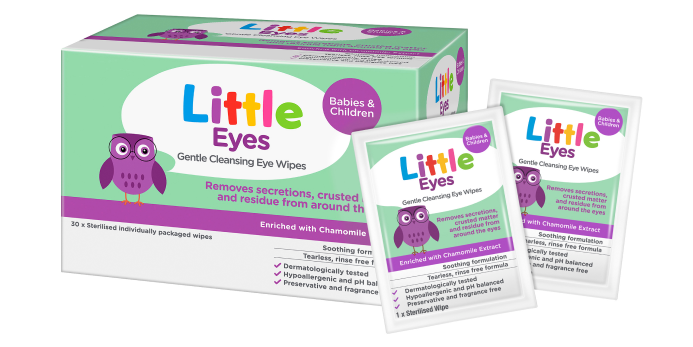
Order your Little Eyes Gentle Cleansing Eye Wipes samples today to help parents clean children’s eyelids and lashes.
Order samples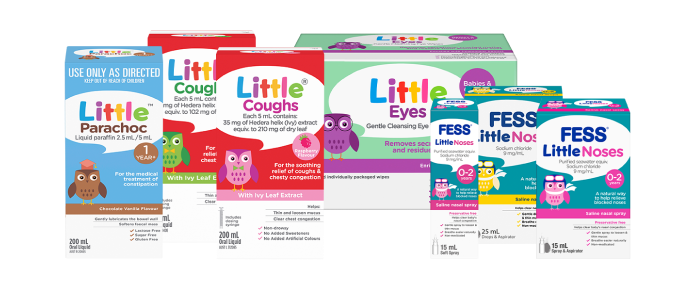
Get to know the Little range
Little Eyes Gentle Cleansing Eye Wipes are part of the Little product range – a range for focusing on specific health conditions in children. Little helps children to get back to being children again, so parents can enjoy the little moments that can make a big difference.
Order samples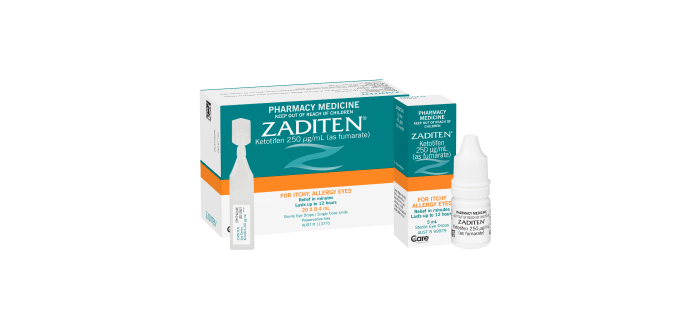
Find out more about Zaditen Sterile Eye Drops
For the relief of itchy, allergy eyes in children 3 years and over.
See moreReferences: 1. Mahoney MJ, et al. Children (Basel). 2023;10(5):808. 2. Centers for Disease Control and Prevention. Preventing the Spread of Conjunctivitis. 2019. Available from: https://www.cdc.gov/conjunctivitis/about/prevention.html. 3. The Royal Children’s Hospital Melbourne. Conjunctivitis. 2018. Available from: https://www.rch.org.au/kidsinfo/fact_sheets/conjunctivitis/. 4. healthdirect. School exclusion periods. 2023. Available from: https://www.healthdirect.gov.au/school-exclusion-periods#conjunctivitis. 5. Hashmi MF, et al. Conjunctivitis. 2020 Available from: https://www.ncbi.nlm.nih.gov/books/NBK541034/.
This information is intended for use by healthcare professionals only.
Little® is a registered trademark of Care Pharmaceuticals. All rights reserved. ©️ Care Pharmaceuticals 2024.

